
Misunderstood, misused in action media, and often mistaken for an explosive, nitrous oxide is the mysterious power adder to those who aren’t in the know.
But what is this curious chemical compound? How does it work to produce such a powerful burst? Is it as dangerous as many have claimed? To help answer these questions, I reached out to the experts at Nitrous Oxide Systems (NOS), Nitrous Express and Edelbrock to learn the ins and outs of N2O.
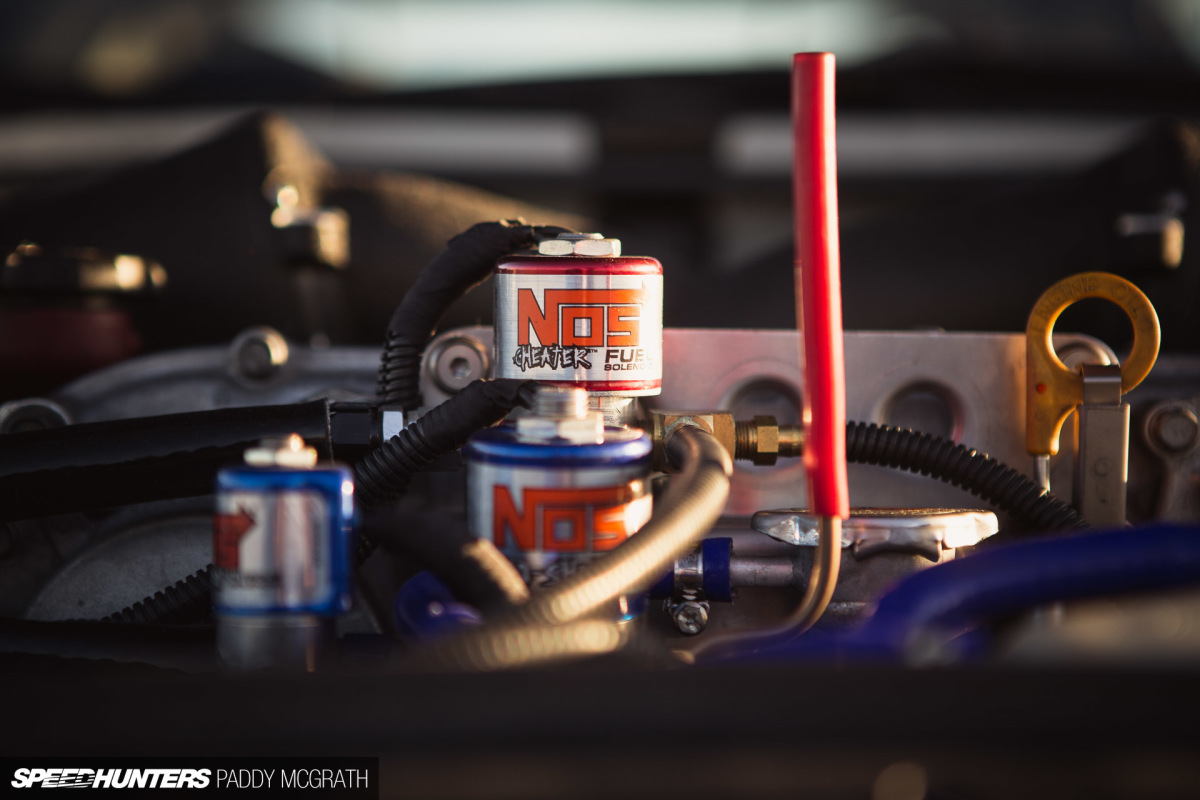
First, what is nitrous oxide? From a chemical standpoint, it’s a compound made up of two parts of nitrogen and a single part of oxygen. It’s used in many places, legally, including amateur rocketry and medicine. Famously, it was suggested in 1914 patent by Robert Goddard, the American rocket pioneer, as an option for liquid-fueled rockets. It’s the choice for use as an oxidizer by many, because when compared to other oxidizers, it’s non-toxic, stable at room temperature, easy to store, and relatively safe to carry on a flight.

Its first use in an internal combustion engine was during World War II by the Luftwaffe in the Göring Mischung 1 (GM-1) engines which were used at high altitudes. It was then developed by Otto Lutz on the Bf 109E/Z fighter and eventually to other aircraft. The British also used a variant of nitrous injection in modified Merlin aircraft engines for the de Havilland Mosquito and the Supermarine Spitfire. This system eventually made its way to ground vehicles, providing the same performance benefits. It offers a boost of power when activated and as needed, with shots that increase horsepower with an associated jet size.
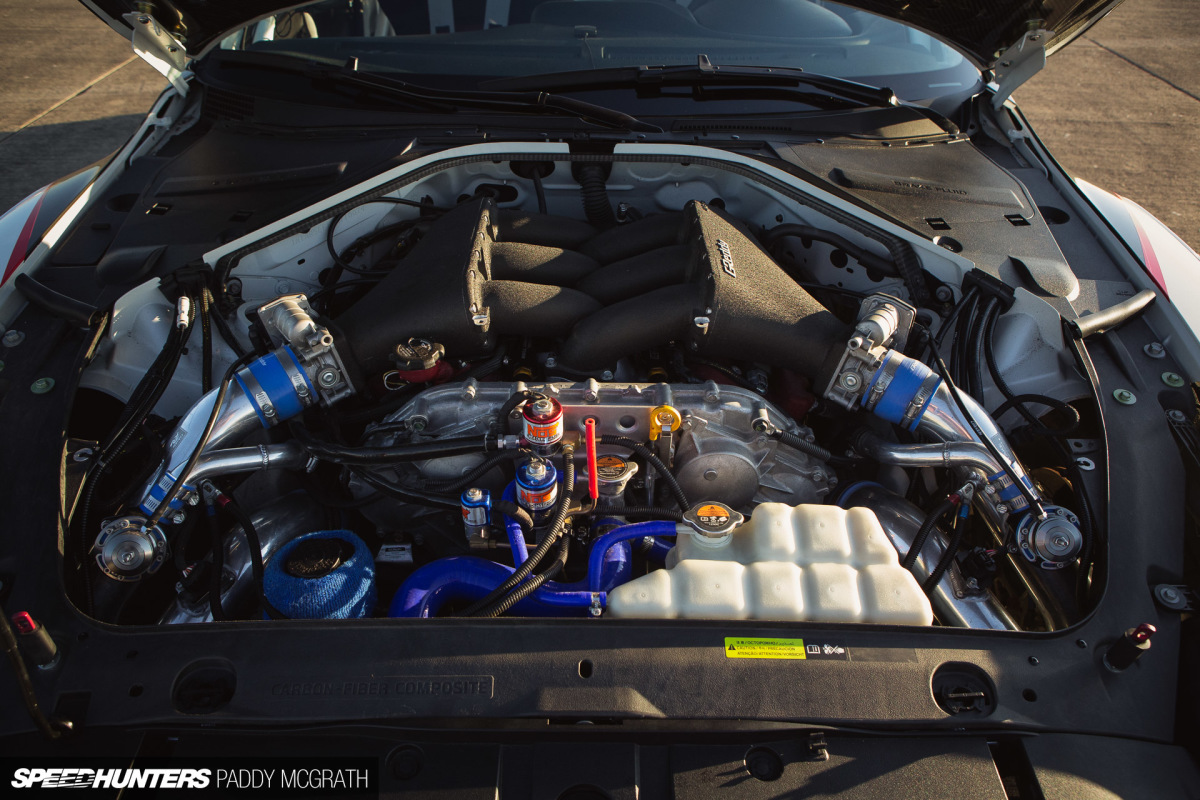
How does that work? How does nitrous oxide provide a boost of power? It’s done when one of the nitrogen molecules decompose to release the oxygen molecules and the remaining nitrogen molecules as the temperature of the combustion chamber increases. This increases the amount of available oxygen in the combustion chamber. It’s a similar idea as to how a supercharger or turbocharger works, but instead of shoving in more atmospheric air into the combustion chamber, it does it chemically. It also makes it an easier package to install on a car over a turbocharger or supercharger.
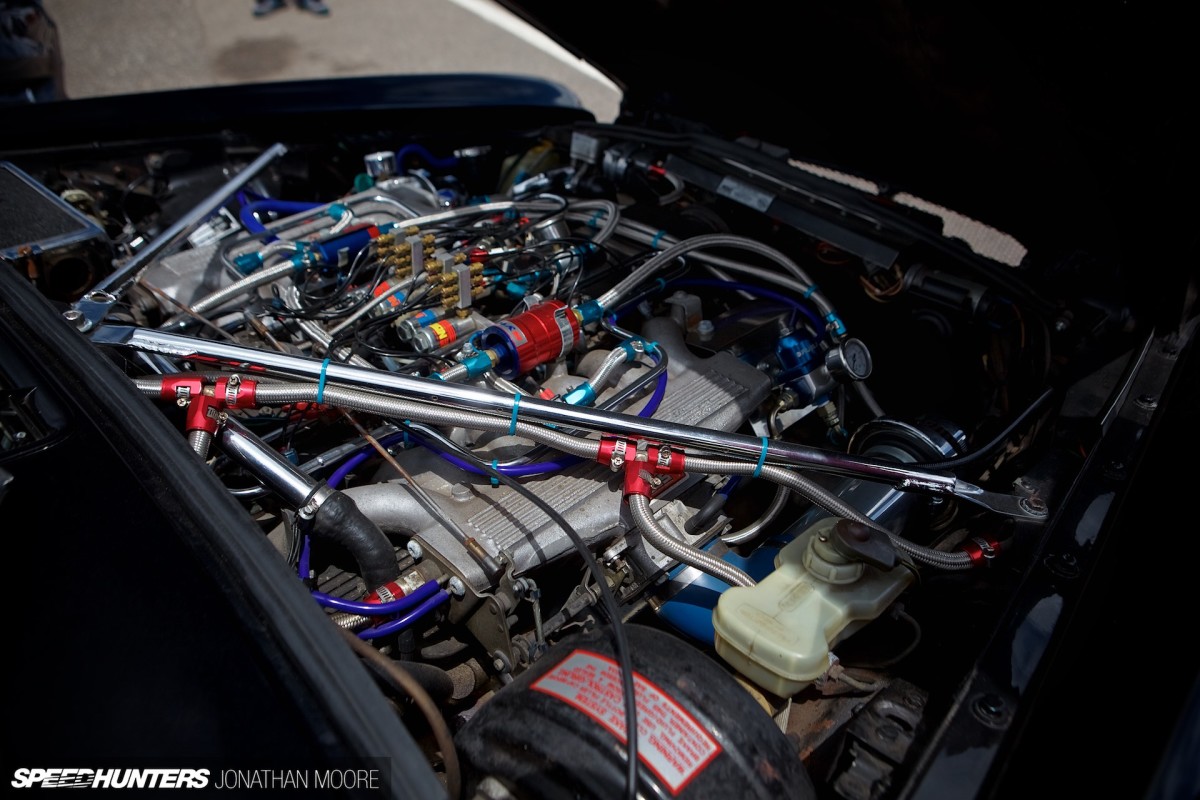
“Hot rodders and drag racers have been opting for juice over boost for many years,” says Keith Jessee of Holley Performance, the parent company of Nitrous Oxide Systems (NOS). “The initial expense is significantly less than superchargers or turbos, and the installation is much, much simpler.” Jamie Wagner, product manager of NOS, agrees, “The mechanical knowledge needed to install a nitrous kit is very basic. Sometimes it’s as minor an operation as removing four bolts, installing a nitrous plate between the throttle body or carburetor and the intake manifold, and installing a couple of hoses.” He’s right, as many carburetor kits from many manufacturers could be installed with just a half-inch open-end/box-end wrench, a flat blade screw driver, and a 10-inch adjustable wrench.

Mike Wood, CEO of Nitrous Express also adds that it’s far less expensive. “A modern nitrous system can be installed by the typical auto enthusiast in only a few hours. It requires little or no tuning and typically cost less than 10% of a complete, installed, and tuned turbo or supercharger set up.” Smitty Smith, the Technical Sales Coordinator at Edelbrock, adds, “Nitrous Oxide doesn’t even require a laptop like a turbocharger or a supercharger when tuning them.” What Smitty is referencing here is adjusting the amount of nitrous by changing of the jets that controls the amount of the liquid sprayed out of the system. Provided you monitor the lean or rich condition of the engine during and after nitrous injection, which you can do without the need of an O2 monitor. You will have to be able to ‘read’ a spark plug, though.

That’s where many beginners make their mistakes when it comes to nitrous oxide injection. There is a risk of both going too lean and going too rich on a nitrous injection system. “Usually when an engine runs too lean on nitrous cylinder temperatures start climbing,” says Keith. “In extreme cases the cylinder temps can get so hot the pistons start to get soft and melt, this of course is no good for obvious reasons.” Mike Wood adds, “Every nitrous system must have a fuel supply that matches its power capability. NX offers the Maximizer 5 progressive nitrous controller which monitors A/F ratios and will either add or subtract fuel if the situation demands it or completely shut the nitrous down if the addition or subtraction of fuel cannot remedy the situation.”

Of course, Hollywood hasn’t helped the image of nitrous. Not only in the use but how explosive it is. This isn’t the case and is very, very far from the truth. Nitrous oxide is an oxidizer, just like oxygen, and isn’t even a propellant for rockets unless you use a catalyst decompose the compound at temperature of 1,070°F (577°C). Without that, nitrous will combust at 1112°F (600°C) at 21.3bar (roughly 309psi). So, even at typical bottle pressures of 900 to 1000psi, you’d still need to create a flame temperature just under the requirement to melt aluminum (aluminum melts at 1218°F or 659°C). However, there is the risk of over-pressurization at 3000psi but most nitrous oxide bottles, especially the ones sold by the companies our experts represent, have a pressure relief device in the form of a burst disk that prevents this from occurring. This typically happens from overheating the bottle, but heating the bottle is an accepted practice provided you do it safely.
Jamie says on this, “At times, the nitrous bottle needs to be heated to get the pressure to a level needed for the tune-up.” That means the use of a proper bottle heater, as Mike explains: “Bottle heaters are a requirement if you want your nitrous system to perform consistently and produce the power it is rated for. Heating your nitrous bottle with an open flame is extremely dangerous and will eventually result in a catastrophic bottle failure resulting in serious or fatal injuries.”

Jamie adds, “The most popular heaters are the silicon based, heating element type, that are wrapped around the bottle and powered by either a 12volt DC or 110volt AC source. The issue with this type of heater is there are typically no thermostats or over temperature protection devices. If left unattended, it can cause over pressurization of the bottle.” If you get one that works well, there is an advantage as Smitty points out: “Edelbrock sells bottle heaters, and they work well when monitored and you keep an eye on the bottle pressure. The best bottle pressure is 900-950psi and you will be consistent run after run.”

One of the things you’ll notice from anyone who uses nitrous is the spray of nitrous in the form of a cloud called ‘purging’. “The main reason for purging your system is so that the nitrous gas is in its gas state and as close to the solenoids as possible,” explains Smitty. “If you did not purge the system, you would not have the nitrous in a gas state, and your mixture of nitrous and gasoline will not be what you think it is.” Jamie explains it a step further: “Nitrous has two states of existence – gaseous and liquid [it is stored in the bottle, primarily in a liquid state]. The gaseous phase of nitrous is what we use to make power with, as it has to be in a gaseous form to split the oxygen molecules from the nitrogen. As the nitrous is in a gaseous form and is not as dense as liquid, so it would take much more of it to make the power we all want if it stayed in its liquid state.”
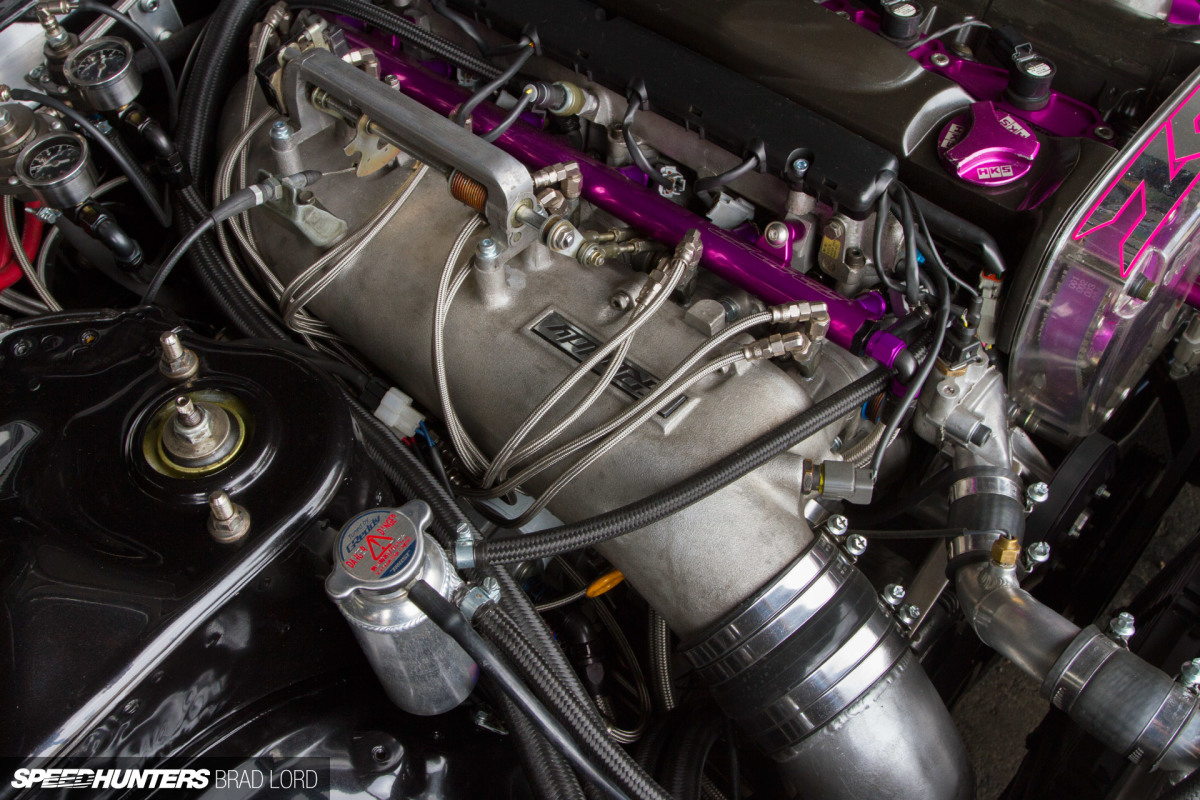
On top of the extra oxygen nitrous brings, there is another advantage when used within or ahead of the intake manifold. By converting to its gaseous form into the manifold, the intake temperatures will drop and create a cooler, denser intake air charge. It’s a similar advantage in power making that TBI and carburetors give over port fuel injection. The state change of liquid to a gaseous form, as the atomized state of fuel and the conversion of the gaseous state of nitrous by it boiling, carries the heat in the intake away and into the combustion chamber.
It also can be used in conjunction with a additional power adder like a turbocharger or supercharger to make up for a lack of boost or, simply, to get the maximum power out of an engine as possible. However, doing the latter requires very careful tuning considering how much oxygen will be added as boost comes in or as you feed in nitrous during boost and the risk of going too lean. The AEM video above graphically shows how nitrous is used in Fredric Aasbø’s Papadakis Racing Corolla during a run.
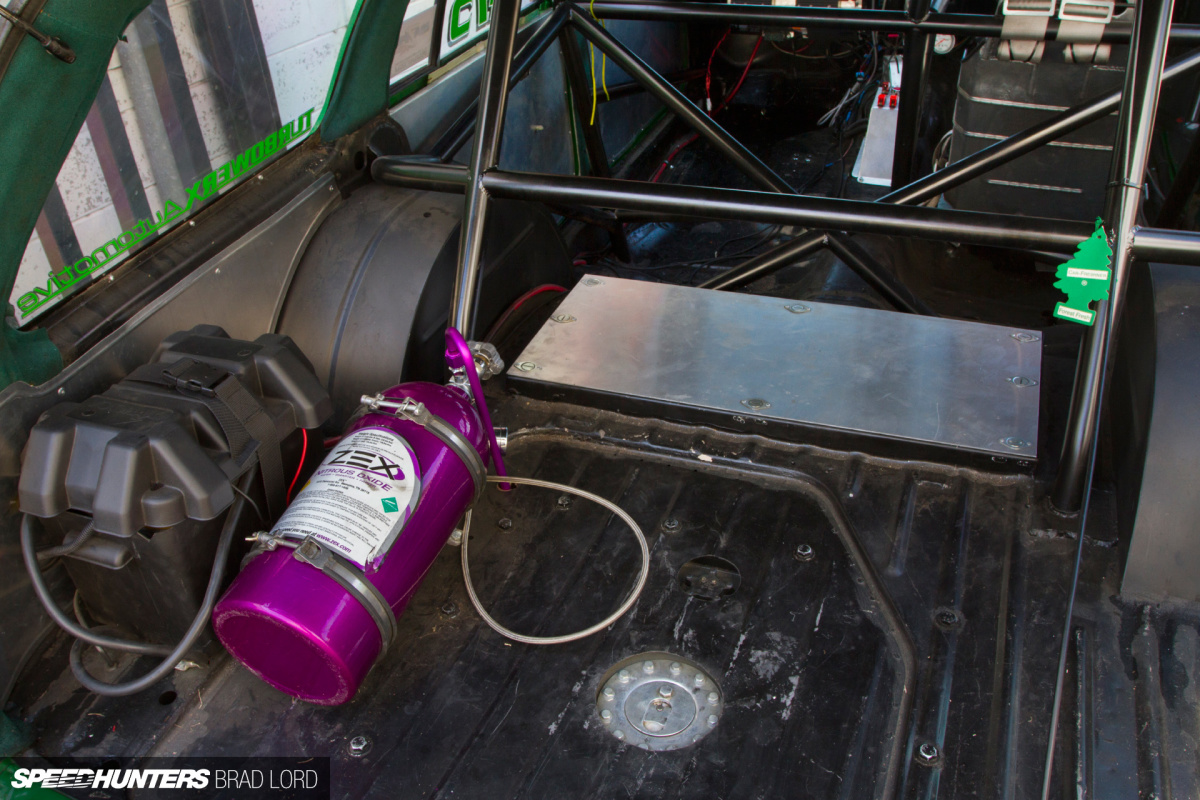
Nitrous oxide is an amazing power adder that gets a bad rap thanks to inexperienced tuners, the dramatics of Hollywood, and the rumors spread by those who don’t know any better. However, as with any power adder, if you do it in a controlled effort and monitor your engine as you tune with nitrous, the gains you get out of it can be equal to that of a turbocharger or supercharger. Even as a gas or liquid, nitrous is a safe thing to use provided you monitor bottle pressure and the lean/rich condition of your engine as you use it. If you’re thinking about using nitrous, don’t shy away from it. You’ll be glad you did.
Justin Banner
Instagram: jb27tt
Facebook: racerbanner
Twitter: RacerBanner





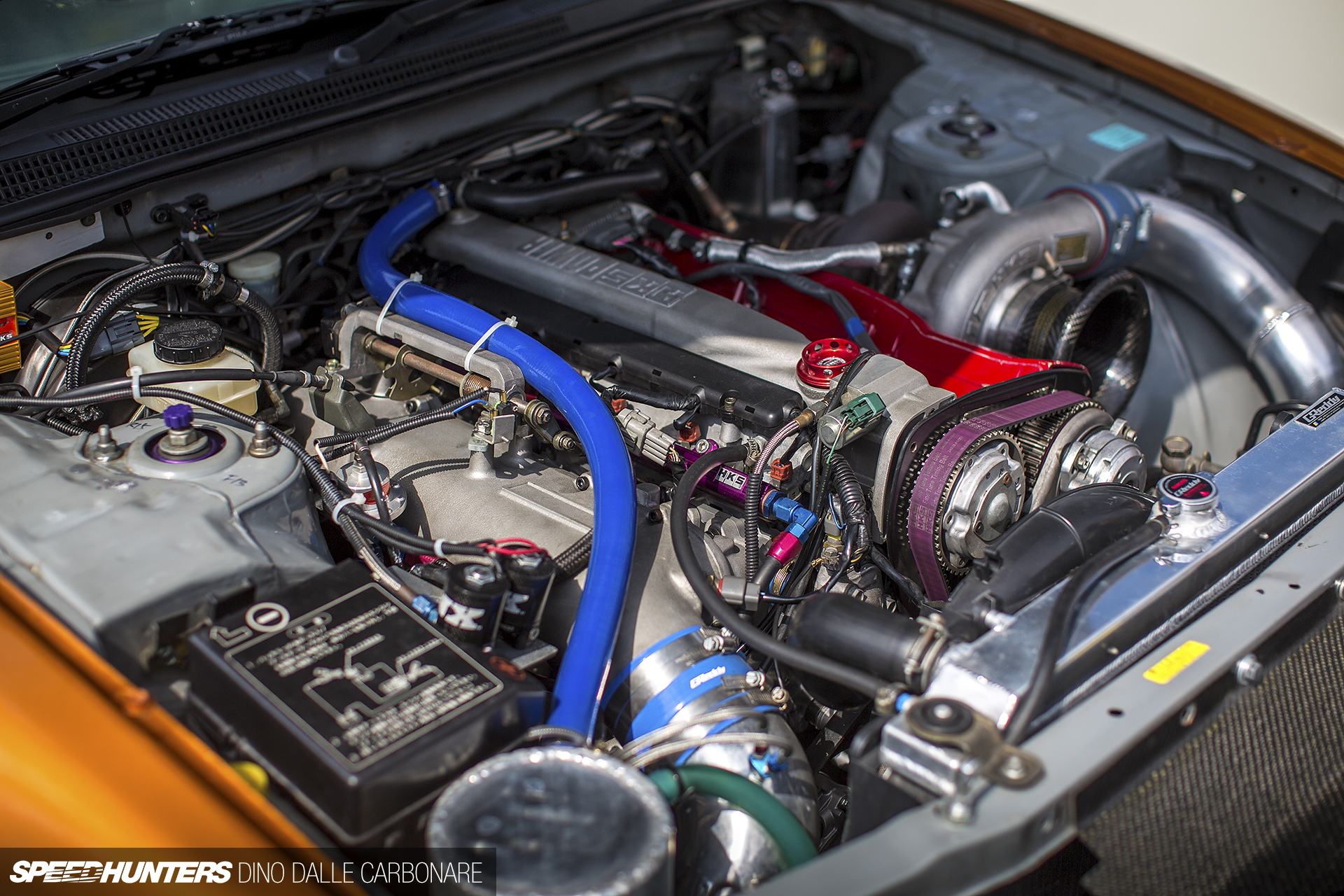
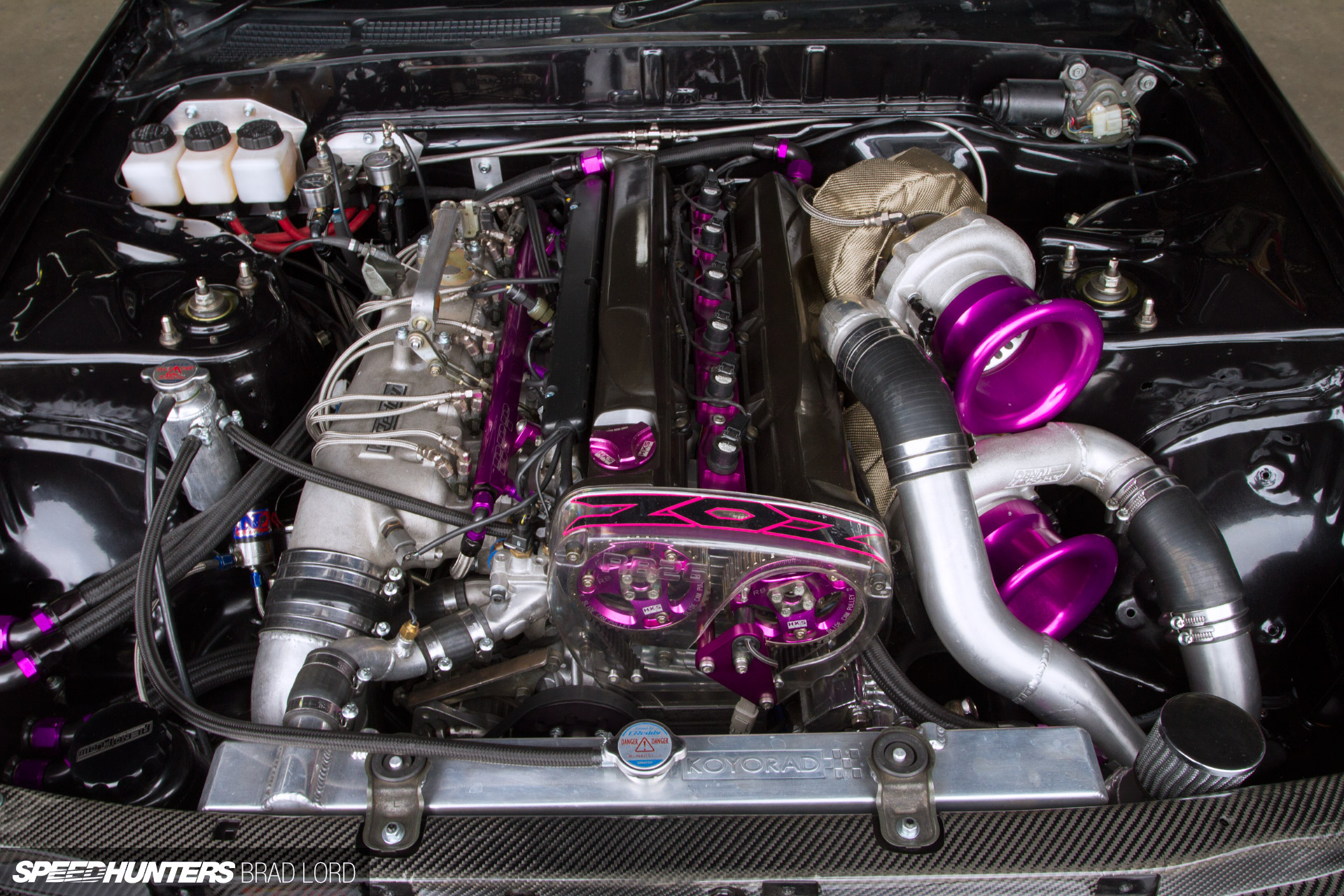
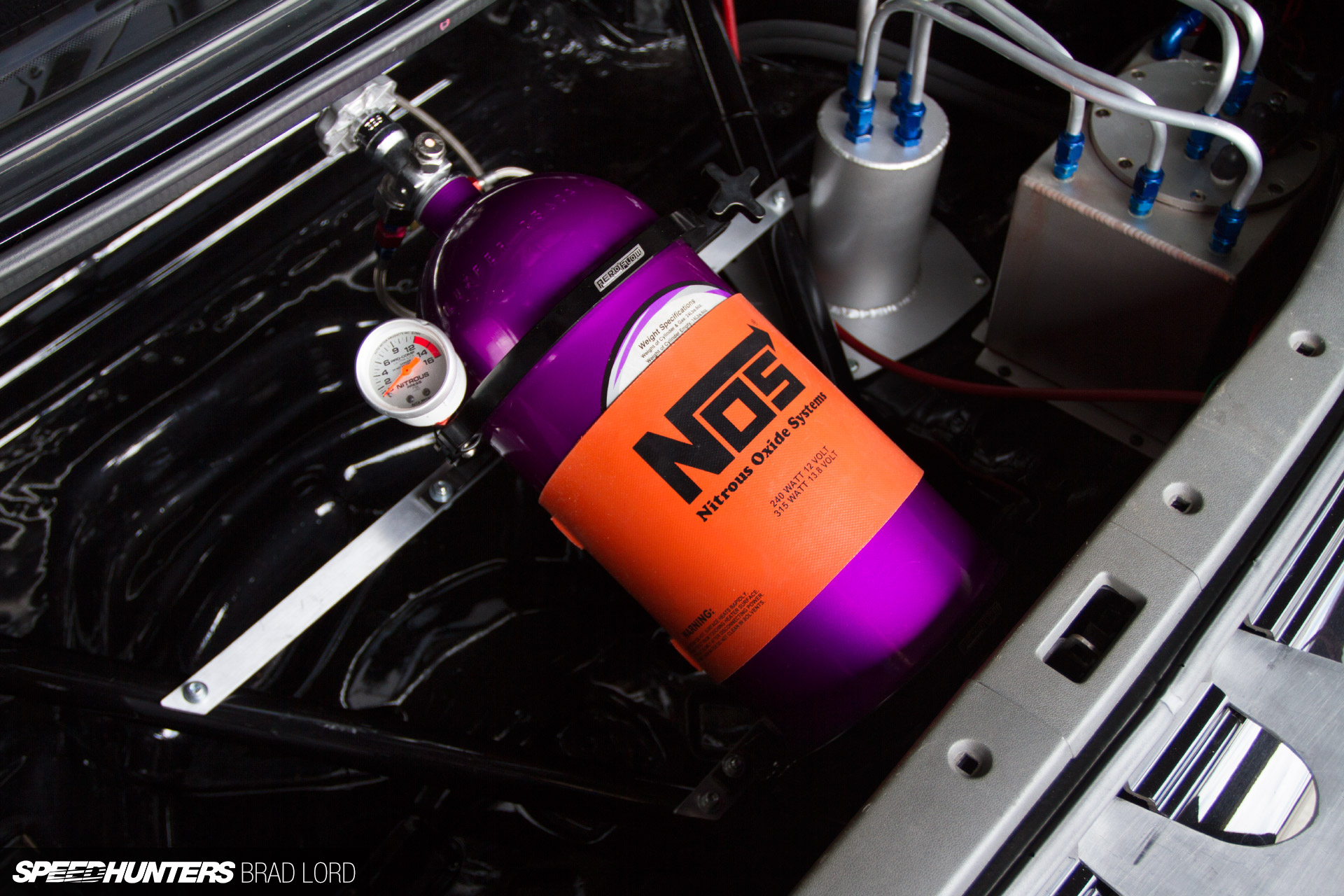












Good as an intro article, now waiting for in-depth feature about "dry and wet" systems etc.
Dry system means you will need to add extra fuel from the injectors ( or carb) to match the nitrous added into the cylinder. A wet system taps into the fuel system and has a fuel solenoid to match the nitrous. solenoid.
Usually the wet is what you want as the dry system requires more tuning, trial and error, etc to get the optimal burn. But all dry systems are a bad thing.. Alot depends on the application. The wet system is alot easier but like stated, a wideband (search MTX-L) should be used to monitor the burn. Also reading the plugs.
But, if used correctly, nitrous is safe despite what myths are out there and of course Hollywood.
The only thing one has to worry about is defective burst discs. Doesn't happen often, but when it does, don't be around the car.
^^
I cant edit.. meant to say " All dry systems ARENT a bad thing"
+1, would love to read more tech articles.
If there is demand for it past this, I am willing to do it.
I'd also love to see some more in-depth articles.
Count me in!
I'm glad to see all of the positive response! I do try to read as many of the comments as I can, so don't be afraid to ask questions or even suggest a tech item you'd like to see covered. If it gets enough attention by response or even votes by our comment system, I'll try to make it happen.
+1
+1 A rather more detailed post regarding the conditions and how-to-use, mount nitrous system would be a huge benefit and encouragement towards the ones interested in experimenting with it.
Theres many write ups all over the internet to properly install the bottle, solenoids, etc, etc.. Even on the manufacturer sites have FAQs waiting to be researched.
But it does hurt the engine life, doesn't it?
Also, this means that the scene in FF was fake as hell...
If not tuned properly and maintained, any power adder will reduce engine life. Then again, any lack of maintenance and poor tuning will be the detriment of any engine, boosted or not.
Yes, that scene in the Fast and the Furious was very incorrect but Hollywood doesn't always go for correct if it doesn't add drama.
So you're saying that if I install a (reasonably) high quality NO2 system to my daily driver and maintain it properly, it wouldn't crack the block or something in a few years? (not trying to be snobby or anything, just genuinely curious)
I mean I'd need an iron block and forged piston at the least right? Or is it only about as stressful as a turbo install?
I'd say, based on experience and tech advice from the guys I referenced here, if your stock engine can't take 5-7-psi of boost then it wouldn't take a 5-15-horsepower shot of nitrous either. At the end of the day all power adders are accomplishing the same goal: add more oxygen to your combustion chamber so you can burn more fuel to make more power. Because of this, all power adders increases cylinder pressure over a NA engine which does add stress on the heads, pistons, connecting rods, and crank. So, again, if your stock engine can't be boosted, it most likely can't take nitrous either.
Just had a kit fitted on th S13 drift car at work. Made a huge difference to lag (our primary reason for the upgrade). But I quickly learned that everything I thought I knew about Nitrous was wrong. Although it's quite simple, there is abit of faffing around with it, as opposed to a turbo for example where you turn the key and drive
Eh, I'd argue that, unless stock, adding a turbo or supercharger requires some work just like a nitrous kit would. You have to adjust for the increased oxygen content in the cylinder no matter what you use. Even an increase in turbo size or the RPM in which boost begins to build on an OE turbo engine requires adjustment to the fuel map and ignition timing. Essentially, that's what you've done, you've increased the oxygen content in the cylinder at a lower RPM than what your turbo could produce much like a compound turbo system would. However, the trick would be that window where nitrous injection and boost meet and tuning at that point, but that's also a problem for compound turbos, dual supercharged (turbo and supercharger) systems, and nitrous/Turbo setups like yours. I'm not trying to trivialize the difficulty in tuning for it, but it would be similar if you had a compound or dual system.
I think you misunderstood, I meant more along the lines of, the turbo on the car just works when you push the start button. The Nitrous we have to make sure we have enough Nitrous for the event, fill the bottles, fit the bottles into the car as they run out, follow a protocol for safety etc
You do not need to use nitrous nearly as often as one would think. After your initial bottle, you'll cut down on average use. 1) Because you beat people really bad 2) Word gets around you have the bottle, nobody wants to race you and loose. It's also best to not tell anybody, keep it to yourself and only use when you know you need it, IE your car runs 13's in the 1/4 and you are racing somebody that does low 13's, high 12's. Hit the button and blow pass him to a mid 12 second, low 12 second pass....
We use it for competition drifting, so it's always being used the same.
Yes, then I do see your point.
More tech articles. More in depth nitrous please!
i agree with Sham and volviz, would like some more like this.
ye
I need NOS. Two of the big ones.
Well presented and a good read! Keen for more tech talk!
Has that Jag near the top ever been covered on here? Keen to know more!
Yes it has. Find it here: http://www.speedhunters.com/2015/06/sir-its-time-for-your-injection/
YES!
I played NFS Most wanted, I know that all the power actually comes from the flame coming out of the exhaust!
(I joke before anyone corrects me).
It's like a jet, only groundier.
Modern driftng: hand brake and nitrous. Because nothing screams I have the skills to get angle like massive horsepower and a custom hand brake. Do Top Fuel cars spray? Hmm...
Top fuel doesn't but Pro Mod does.
Also, in terms of drifting, one of the most recognized AE86s in D1GP used nitrous before it was banned: the Droo-P Toyota Corolla AE86 once driven by Toshiki Yoshioka had a twin dry (fuel less) shot to produce 300hp out of the NA 1.8-liter.
So how are the laws regarding nitrous on street in various parts of the world? Here in Georgia, it is illegal to have an connected/open bottle of nitrous Or get caught purging on the street.
Most of the illegality issues of nitrous comes from the release of extra nitrogen into the exhaust which recombines with oxygen in the air to create nitrogen oxide. That forms a greenhouse gas or can combine with hydrogen, or a nitrogen atom combines with water molecules, to create nitric acid and is a known cause of creating acid rain.
However, there are laws in non-pollution controlled areas that do make using nitrous illegal due to street racing fears.
Time for some NOS ! I owe you a 10 second car . nitrous is an often misused misunderstood power adder having a good understanding of how to use it safely and effectively is key to longevity of the engine its installed onto. Very informative and simple to understand intro to nitrous oxide very well done mr banner btw are you allergic to gamma radiation ??? Jus funnin
That's Bruce. He's my father's brother's nephew's cousin's former roommate.
I've been using nitrous for years. I've been using Nitrous Express systems for years, NOS before that. Dry is the best route to go especially on applications where you have control over the fuel system, especially fuel injected cars.
Boost adds about 22% oxygen
Nitrous adds about 33% oxygen.
Main problem with nitrous is flat flow. IE it doesn't increase with engine speed. Engines can easily handle more nitrous as rpm increases because more pressure is being off loaded faster than at lower engine speeds.
I use a NX Dry nitrous system in conjunction with a NX Maximizer 4. I will upgrade to the 5 at some point because it gives me some advantage over the 4.
That said the 4 works great and all the inputs can be connected at once, just select them with the tune you program. The advantage of the 5 is this programs are selectable with the optional touch screen display.
One main advantage is that you can wire up a wide band 02 sensor and have the nitrous system shut down if a lead or over rich condition is detected.
You can also have it turn on/off at certain boost pressure for turbo charged cars.
My setup works with rpm ramp up. start @40% 4300 rpm, working up to 100% by 6000 rpm, I shift @6500 rpm.
I'll post again when I have some results on my latest car.